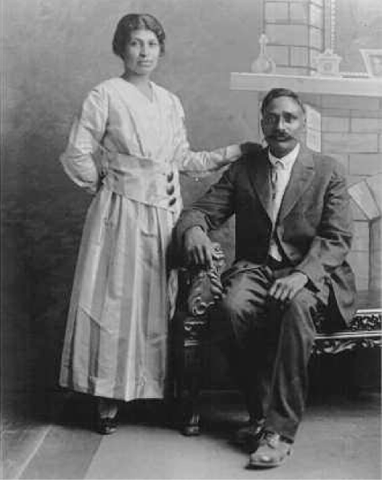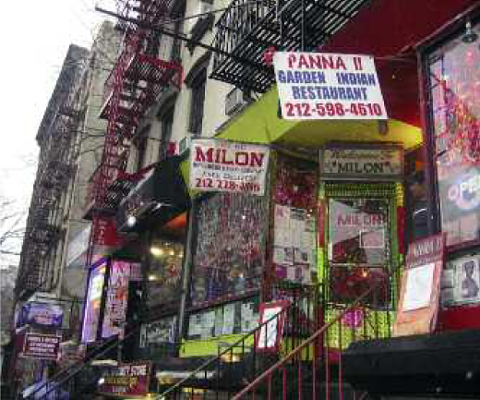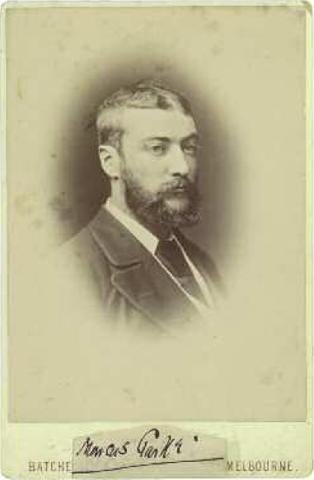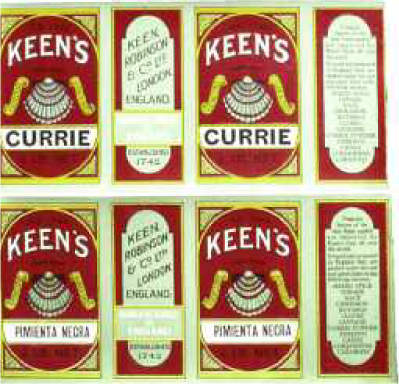3
The Colonies: The United States, Canada and Australia

Passage to India!
Cooling airs from Caucasus far, soothing cradle of man,
The river Euphrates flowing, the past lit up again.
Lo, soul, the retrospect, brought forward;
The old, most populous, wealthiest of Earth’s lands,
The streams of the Indus and the Ganges, and their many affluent
(I, my shores of America walking to-day, behold, resuming all)
Walt Whitman, Passage to India, 1869
The United States
In the eighteenth century, immigrants from Britain brought with them to the United States the popular cookbooks of the day, including those of Hannah Glasse, Mrs Rundell and Mrs Beeton, which were soon published and sold in official and pirated editions. The first known curry recipe in North America was one for apple curry soup in the eighteenth-century manuscript of Catherine Moffatt Whipple (b. 1734), wife of a signatory of the Declaration of Independence.
A work considered by some to be the first truly American cookbook (as well as the first regional American cookbook) is Mary Randolph’s The Virginia Housewife, or Methodical Cook (1824). It contains a recipe for chicken curry ‘after the East Indian manner’, for catfish curry and for curry powder (equal amounts of turmeric, coriander seed, cumin seeds, white ginger, nutmeg, mace and cayenne pepper). Eliza Leslie’s best-selling Direction for Cookery in its Various Branches (1840) contains recipes for ‘Mulligatawany Soup as Made in India’, chicken curry and chicken pulao. The Housekeeper’s Assistant by Ann Allen (1845) contains recipes for curry, Malay curry and curry powder. Another influential figure in nineteenth-century American cookery was Catherine Beecher, author of Domestic Receipt Book (1846). Her generic recipe for curries starts with braising boiled chicken or veal in butter and some of the boiling water, and stewing it for twenty minutes with home-made curry powder, boiled rice, flour and the cooking liquids.
Before the American Revolution, wealthy American colonists ordered many luxuries from India via England and the Caribbean, among them tea, pepper, ginger, cardamom, saffron, turmeric, cumin and curry powder. Indian spices became more accessible to the middle classes after the East India Company lost its monopoly over trade with India in 1813. Boston’s India Wharf opened in 1809 to accommodate ships going to and from India and China; in one day alone, nearly eighty ships from Calcutta unloaded their cargoes on its docks. Chicken curry, curried veal and lobster curry were standard items on the bills of fare of Boston taverns and eating houses in the 1820s and ’30s.
While Americans were importing ‘hot’ spices from India, they were shipping large quantities of cold ice from New England’s frozen ponds and rivers to Calcutta and Madras. ‘Thus it appears’, reflected Henry David Thoreau, who, like his fellow New England Transcendentalists, was enamoured with Indian philosophy, ‘that the sweltering inhabitants of . . . Madras and Bombay and Calcutta drink at my well’, and that while he bathed ‘in the stupendous and cosmogonal philosophy of the Bhagavad-Gita, the pure Walden water is mingled with the sacred water of the Ganges’. Whether Thoreau, a vegetarian, had the opportunity to try Indian food is not known. The number of Indians in America remained very small: a total of 716 arrivals between 1820 and 1900, most of them seamen and indentured servants.
Throughout the nineteenth century, curry recipes featured in popular cookbooks. Miss Parloa’s New Cookbook: A Guide to Marketing and Cooking by the food editor at Good Housekeeping contains nine curry recipes, including mulligatawny soup, curry of cold meat and curried chicken in jelly. An article by the New York Times London correspondent on 25 November 1887, ‘Curry for the Turkey’ (a review of Daniel Santiagoe’s The Curry Cook’s Assistant), suggests that readers make a curry of their Thanksgiving left-overs instead of the usual hash.
One of the most popular curries in the southern United States was the Anglo-Indian dish country captain chicken, which many believed was invented in America. According to one explanation of its origin, a sea-captain who sailed into Charleston harbour with a shipload of spices from India was so graciously entertained by the city’s hostesses that he repaid their hospitality by teaching their cooks to make a chicken curry, which was then named after him.
The earliest published recipe for country captain chicken appeared in Eliza Leslie’s New Cookery Book (1857). In the early twentieth century Alexander Filippino, the chef at the fashionable New York restaurant Delmonico’s, made his own version that included currants and slivered almonds.
President Franklin D. Roosevelt became a fan of country captain chicken after tasting it in Warm Springs, Georgia, where he eventually built a home. One of his visitors, General George S. Patton, also loved the dish, which in 2000 the Pentagon made into one of its packaged MRES (Meals Ready to Eat) given to soldiers in the field.
The dish made such an impression on the prominent food teacher and writer James Beard that he taught it at his cooking school in New York. Later it found an impassioned champion in the New York food writer Cecily Brownstone, who has been called a ‘one woman preservation society’ for the dish. For nearly four decades she exposed myths about country captain chicken and rooted out impostors. ‘Using a breast, can you imagine?’ she said in a telephone interview in 1991. ‘I don’t want to give names – but can you imagine that someone actually used cream? Cream! And they called it country captain! It is very discouraging.’1 She too preferred Filippino’s recipe, published it many times and insisted on getting it included ‘for the record’ in dozens of cookbooks, including the classic The Joy of Cooking.
Another very popular American dish that may have originated in the south was curried chicken salad – pieces of cooked chicken, celery and sometimes pieces of pineapple or apple served in a mayonnaise dressing flavoured with curry powder. Oysters were inexpensive and abundant in the nineteenth century – in 1874 there were more than 850 oyster bars in New York City alone – and curries were a favourite method of serving them both in the US and Britain.
The first Indian chef in North America – and one of the earliest celebrity ‘bad boy’ chefs – was Ranji Smile. He was discovered by the New York restaurateur Richard Sherry at London’s Savoy Hotel and brought to New York in 1899 to prepare curries at Sherry’s eponymous new restaurant on Fifth Avenue. Dubbed ‘King of the Curry Chefs’ by reporters, Smile became an overnight success by ‘initiating the fashionable set in New York into the mysteries and delights of East Indian cooking’, according to a Harper’s Bazaar article called ‘A Chef From India: Women Go Wild Over Him’. ‘The fancy for curries, which is the foundation for all India dishes, seems to have take possession of every one who has eaten of them’, reported the Los Angeles Times.
Smile (his name was probably an invention) claimed to have learned his craft in his native Karachi and in Calcutta and Bombay hotels. He told reporters that Americans cannot make good curries because they are in too much of a hurry and use the same mixture for beef, chicken and fish. Curries must be simmered slowly, never boiled and are not invariably hot.
Sadly, publicity went to Ranji Smile’s head. He started calling himself ‘Prince’ and claimed to be the fourth son of the Emir of Baluchistan, a graduate of Cambridge University and a personal friend of King Edward VII. Smile left Sherry’s to open his own restaurants, which failed. He was arrested for drunkenness, disorderly conduct and violating federal labour laws by bringing in illegal workers from India. Smile was reduced to giving culinary demonstrations and married a succession of ever-younger American women.
Success went to the head of Ranji Smile, who came to New York as a curry chef in 1899, and began calling himself a prince and friend of royalty. |
In 1913 Ranji Smile left for Delhi with his newest wife to open ‘a real Indian restaurant for the poor American tourists, who never have had anything good to eat since they began to look up Kipling’s country’. There is no record that such an establishment ever saw the light of day or that Ranji Smile left behind any culinary legacy in his adopted land.
By the end of the 1920s New York had half a dozen Indian restaurants known for their fiery curries, among them The Rajah on 44th Street, west of Broadway, and Ceylon India Inn on 49th Street, which operated until the mid-1960s. Thanks to racial exclusion laws, the country’s Indian population remained very small: only around 3,000 people in 1930, many of them students living in New York City.
American food writers were fascinated with Indian food but, because their contacts with India and Indians were limited, they often substituted fantasy for reality. The author of a 1941 article in the New York Times rapturously describes a visit to an unnamed Indian restaurant where the ‘almond-eyed Hindu chef in his wondrously wound snowy turban’ smiles enigmatically. She could almost hear the muted music of The Song of India as she peered into the ‘steaming caldrons of strange, spicy mélanges . . . with their pungent perfumes’ filled with that ‘rare Oriental ragout that is called a curry’. Curry sauce is described as a marvellous medley – ‘incredibly involved for the average occidental’ – made from tomato paste, green peppers, and between twenty and forty spices. The unnamed restaurant’s eclectic offerings include pink curries from Java and Ceylon, Hawaiian chicken curry, dark spicy lamb curry, and a mixed vegetable curry with baked bananas, cashew nuts, papaya cubes and okra – ‘the true foods of occult India’.2
In 1952 the prominent food writer and editor Florence Brobeck published Cooking with Curry (New York, 1951), the first American book devoted entirely to curry. As she explains in her introduction, most cookbooks on the subject ‘frighten the wits out of a plain American cook’ because they call for a multitude of pots, sieves, colanders, a mortar to grind exotic spices, strange fruits ‘only available if you happen to know a sailor who’s due from the South Seas’, as well as a knowledge of various Indian dialects to translate Hindu weights and measures and the native words for spices. She provides menus for middle-class households that feature Hawaiian, Algerian, Australian, New Zealand, Cantonese, Chinese, Japanese, Cajun, West Indian and Turkish curries as well several quasi-Indian dishes with names like Bombay, Calcutta or Bengalese curries. With a few exceptions, all call for the use of ready-made curry powder.
After World War Two, Bengali seamen who had jumped ship and settled in Harlem opened halal butcher shops and small Indian eating establishments on New York’s Upper West Side. Some of these men married Puerto Rican and African-American women. Another hybrid community arose in California’s Sacramento Valley where Punjabi men, mainly Sikhs, had emigrated as farmers in the early twentieth century. After racial exclusion laws in 1917 ended immigration by ‘non-whites’, many married local Mexican women. Their community, which came to total 400 couples, became known as ‘Mexican Hindus’. Their cuisine combined elements of Mexican and Punjabi food. Chicken curry, roti and something called ‘Hindu pizza’ still feature on the menu of Rasul’s El Ranchero Mexican restaurant in Yuba City, California.
The 1964 World’s Fair in New York raised the profile of Indian food in America. The dining room in the Indian Pavilion received enthusiastic reviews from Craig Claiborne for its elegant design, the ‘intoxicating politesse’ of the staff and the excellence of the food, ‘admirably spiced but without the overpowering hotness that is frequently and often mistakenly ascribed to Indian cuisine’.3 But Claiborne, who often reviewed Indian restaurants for the New York Times, complained that it was difficult to find an Indian restaurant of unfailing distinction in Manhattan. However, he did have high praise for Gaylord’s Restaurant, whose chef came from the original Moti Mahal, especially its tandoori chicken. He noted that the menu featured several dishes of the ‘curry’ type – the quote marks indicating that, in his view, this was not a legitimate name for an Indian dish.
Antonia Alvarez and Rullia Singh, photographed in 1917, were part of California’s ‘Hindu-Mexican’ community composed of Indian men who married local Mexican women.
In 1974 Madhur Jaffrey published An Invitation to Indian Cookery, which Craig Claiborne called ‘perhaps the best Indian cookbook in English’. In the introduction, she states:
To me the word ‘curry’ is as degrading to India’s great cuisine as the term ‘chop suey’ was to China’s . . . ‘Curry’ is just a vague, inaccurate word which the world has picked up from the British, who, in turn, got it mistakenly from us . . . If ‘curry’ is an oversimplified name for an ancient cuisine, then ‘curry powder’ attempts to oversimplify (and destroy) the cuisine itself.4
In her best-selling A Taste of India (1985), Madhur Jaffrey uses the term ‘curry’ for only one dish. In 1980 Julie Sahni published her best-selling Indian Classical Cookery. She writes that in north Indian cooking there is no real equivalent to Western or British curry powder or, for that matter, any dish known as a curry, the closest thing being a salan – a meat dish with a thin gravy (a term rarely found in British recipe books). However, this strict usage seems to be a thing of the past: Madhur Jaffrey called a later work The Ultimate Curry Bible, which contains information and recipes for curries from around the world. Raghavan Iyer extends the definition even further in his book 660 Curries (New York, 2008): the 660 recipes include salads, dals, kabobs, breads and beverages.
With the end of restrictive immigration laws in 1965, hundreds of thousands of Indian professionals emigrated to the US, part of the famous ‘brain drain’. By 2005, 2.4 million people of South Asian origin lived in the United States. However, unlike in Britain, only a small minority are of Bangladeshi origin.
By the 1970s there were Indian shopping/restaurant districts in all US cities, including Jackson Heights in Queens, New York; Chicago’s Devon Avenue; Pioneer Boulevard in Los Angeles; and Hillcroft Avenue in Houston. Today virtually every suburb and town has Indian grocery stores that stock spices, pickles, fruits and vegetables, and frozen and packaged meals and breads. Indian products can also be found on the shelves of most supermarket chains.
Of US cities, New York has the largest number of Indian restaurants as well as the widest range of levels and cuisines, ranging from ‘dhabas’ – tiny hole-in-the-wall establishments that serve kabobs, biryanis and other north Indian dishes to taxi drivers – to elegant upmarket establishments like Tabla and the Michelin-starred Devi, which opened in 2004.
New York, Chicago, Toronto and other North American cities have Indian shopping and restaurant districts, like this one on First Avenue between 5th and 6th Streets, Manhattan.
In general, Americans are less familiar with Indian food than the British. One reason is the lack of close historical ties between the US and India; another is the prevalence of Chinese, Mexican and Thai restaurants, which satisfy Americans’ growing taste for spicy foods. There are no equivalents of British curry houses with their flock wallpapers and standardized menus, and no balti restaurants. Most Indian restaurants in the US serve a hodgepodge of Punjabi, north Indian Muslim and southern Indian dishes. A survey of the restaurant menus posted on the website menupages.com indicates that the term ‘curry’ appears much less frequently than it does in the UK, and in many cases is not used at all.
Canada5
In the eighteenth and nineteenth centuries, most immigrants to Upper Canada (now the province of Ontario) came from the British Isles and brought with them the popular cookbooks of the day. The first Canadian cookbooks, such as Mrs Nourse’s Modern Practical Cookery (1845) and Mrs Clarke’s Cookery Book (1883), contain recipes for curried oysters, tripe, chicken, rabbit, lobster and potatoes. Mrs Clarke observes that while old Anglo-Indians know how to make a good curry, it is rarely found in North America except in the house of someone who has spent many years in India. (She adds that even in India, the art of curry-making is declining.)
Spices played an important role in enlivening the pickled, dried and salted meats and fish that were the early settlers’ daily fare during the long winters. In the 1830s a pioneer woman wrote in her diary: ‘We consume more in the way of ketchups, sauces, curry powder, etc. than we used to do at home on account of the many months we are without fresh meat.’ An unnamed moose hunter wrote in Gentleman’s Magazine in 1872: ‘I never went out without one or more small cases of curry powder that I brought with me from home.’
Top civil servants who rotated between posts in England and the colonies introduced curry to upper-class circles. In 1877 Governor General Lord Dufferin, formerly British Under-Secretary for India, served a curry to his guests at a camping expedition on the Winnipeg River. Curries and Anglo-Indian dishes such as mulligatawny soup were common at official banquets in Upper Canada (although not, of course, in Lower Canada, modern Quebec, where French culinary tradition prevailed).
Like those of the US and Australia, Canada’s immigration policy excluded non-whites. In 1962 the most blatantly racist provisions were overturned; in 1976 a new policy based admission on education, employment skills, language abilities and family sponsorship. The 2001 Canadian census reported that over 900,000 residents of Canada were of Indian origin – 3.1 per cent of the entire population – including a sizeable number from Trinidad and Tobago and Guyana.
Most immigrants settled in Toronto and Vancouver, where there are thriving and diverse Indian food cultures. Samosas and Caribbean curry-flavoured patties are sold everywhere and have almost become national dishes. The restaurant culture is thriving: Toronto has North America’s only Chettinad restaurant, as well as establishments serving Keralan, East African Ismaili, Guyanese, Trinidadian and Sri Lankan food. Vancouver is the site of one of Canada’s top restaurants, Vij, an upmarket establishment on a par with the Michelin-starred London restaurants.
Australia
Early immigrants to Australia came almost exclusively from the British Isles, and in the nineteenth century all the popular British cookbooks of the day were sold in Australian bookshops. The relatively few cookbooks written by Australians – The Australian Cook (1876) by Alfred Wilkinson, Mrs Lance Rawson’s Cookery Book and Household Hints (1878), Australian Plain Cookery (3rd edn, 1884) and Mrs Maclurcan’s Cookery Book: A Collection of Practical Recipes Specially Suitable for Australia (1898) – followed the English model and all contained curry recipes. For example, a suggested menu in Mrs Maclurcan’s book, written for middle-class families, features curried mutton and rice, cabbage and potatoes, cheese canapés and baked apples in butter.
That curry was well known in nineteenth-century Australia is obvious from a tongue-in-cheek article by the Australian novelist Marcus Clarke, who despised the nouveau riches’ worship of all things French and urged that curry be made the national dish:
The basis of our regenerated Australian food system must be the curry – a curry of kid, mixed with three eggs, the white of a coconut scraped to a powder, two chillies, and half a dozen slices of pineapple . . . The small river crayfish are excellent material, while he who has never eaten a young wombat treated with coriander seeds, turmeric, green mango and dry ginger has not used his opportunities. When I become rich enough to benefit my fellow creatures, I shall take a shop in Collinstreet [in Melbourne] . . . and building a bamboo veranda, will establish a Curry House. Nothing but curry and pale ale will be dispensed and my waiters will be Chinname [sic], the best servants in the world dressed in spotless white robes.6
Starting in the 1830s, small groups of Afghans (a term that also included people from the Middle East and India) came with their camels to work in the outback, where only camels could survive the harsh climate and terrain. Today their only legacy is the wild camels that wander about the outback, and the name of the Ghan Railway that runs between Adelaide and Darwin. Between 1901 and 1947 a White Australia policy prohibited and deported non-white immigrants. Indian independence in 1947 and independence and civil war in Sri Lanka resulted in a large influx of Anglo-Indians (descendants of British fathers and Indian mothers) and Sri Lankan burghers (Sri Lankans of mixed Dutch, Portuguese, European and Sinhalese/Tamil descent).
The Australian novelist Marcus Clarke (1846– 1881) so disliked his countrymen’s adulation of French food that he suggested curry be made the national dish. |
Keen’s Curry Powder was developed in Tasmania by Joseph Keen in the early 1860s and remains a popular curry flavouring in Australia. |
The White Australia policy was abolished in 1978. By 2006 nearly half of all Australians were either born overseas or had at least one parent who was born abroad. Many of the immigrants came from India, Fiji and South-East Asia. This influx coincided with the Australian culinary revolution that attended the explosion of the wine industry, and today Australia has one of the world’s most diverse food cultures. Chinese, Thai, Indonesian, Vietnamese and Indian restaurants are ubiquitous in Australian towns and cities. As one blogger writes:
These days, just about every Australian can walk into a restaurant and order a nasi goreng or a buoi phuc trach or a bowl of shito sauce . . . [and] just about every Australian can cook a fancy-schmancy exotic meal at home . . . Gone are the days of roast dinners and veal forcemeat and the great Australian curry made out of chump steak, sultanas, banana, strawberry jam, and a teeny pinch of Keen’s curry powder for that proper spicy Indian flavour.7




